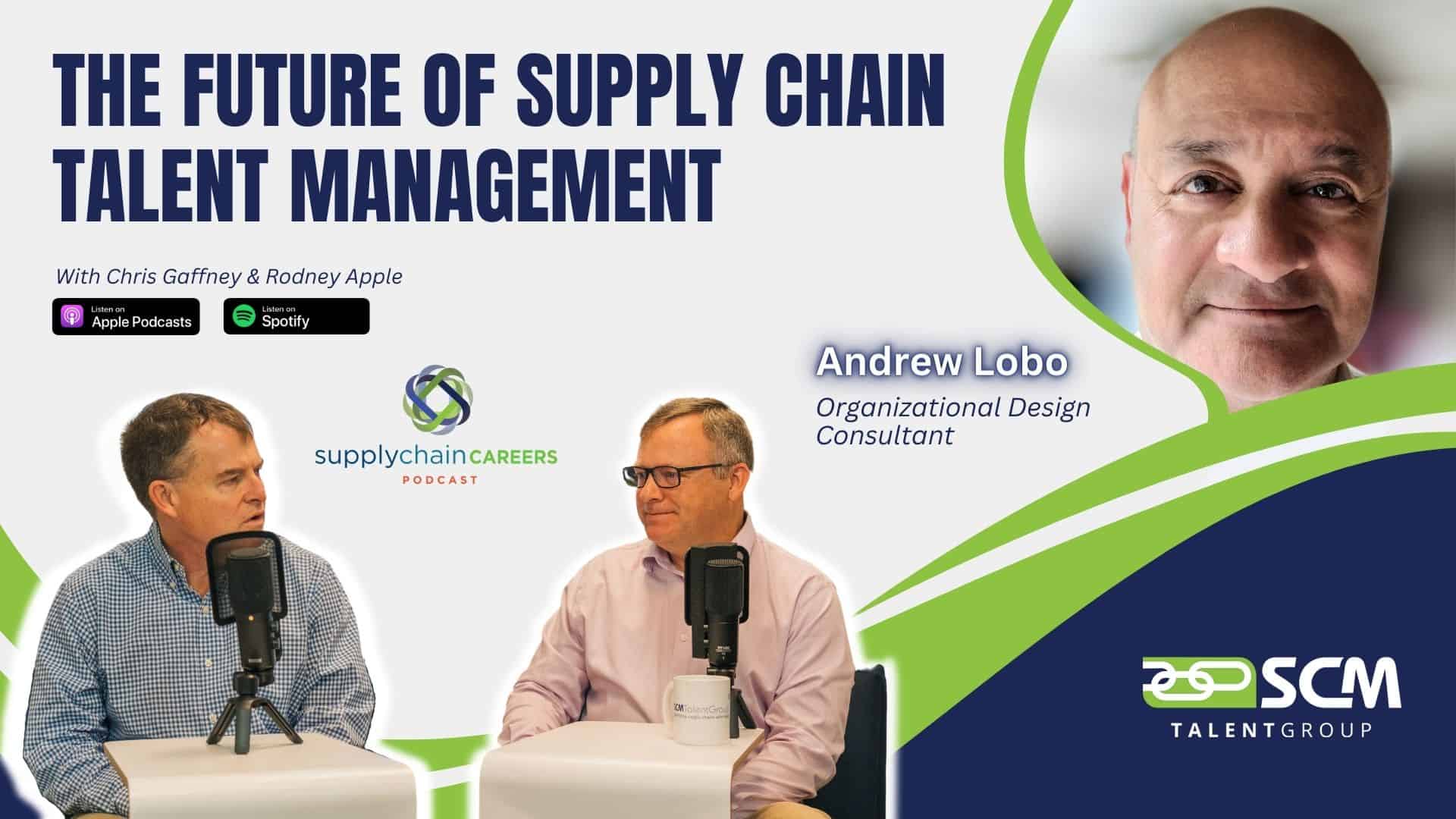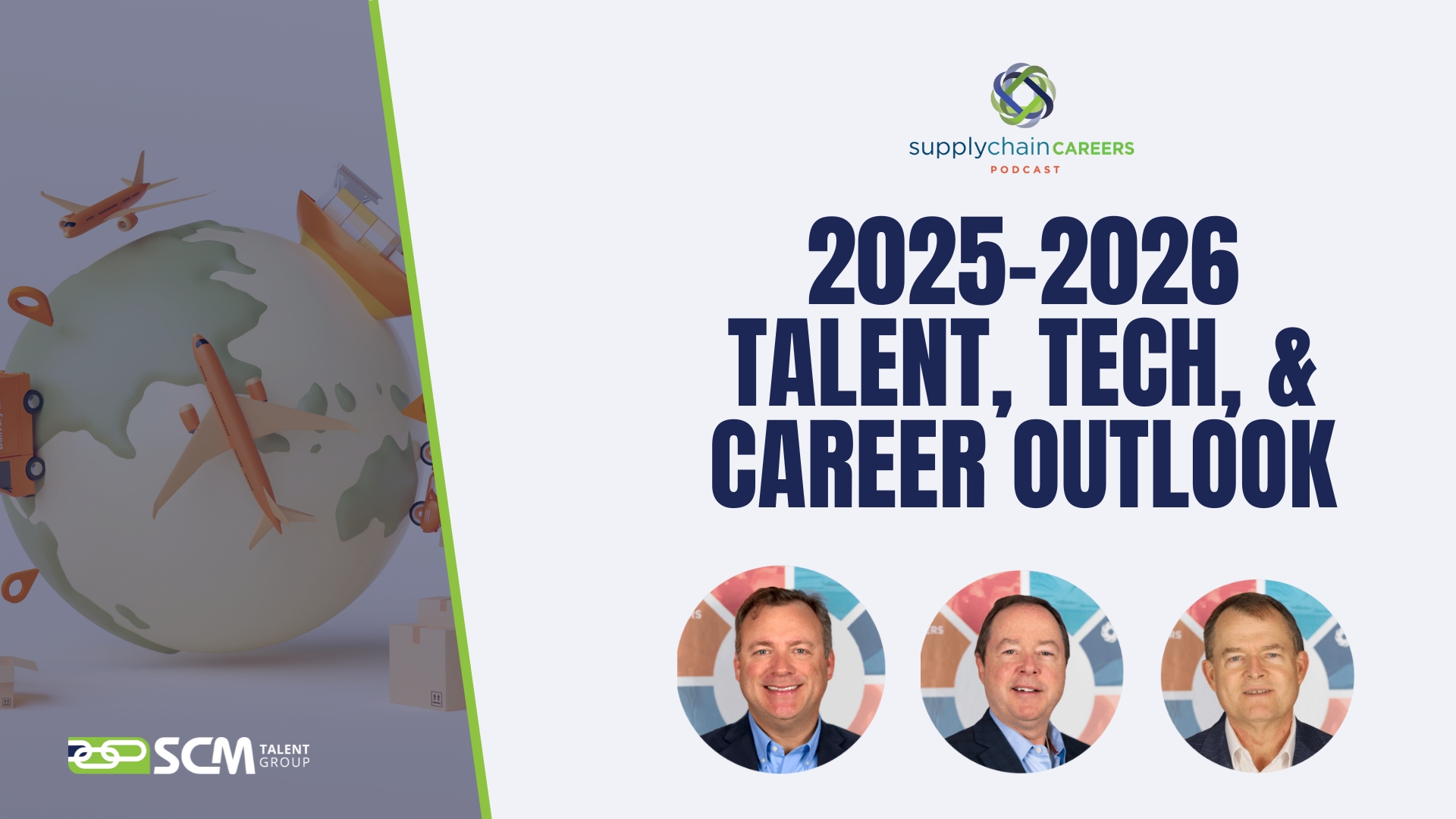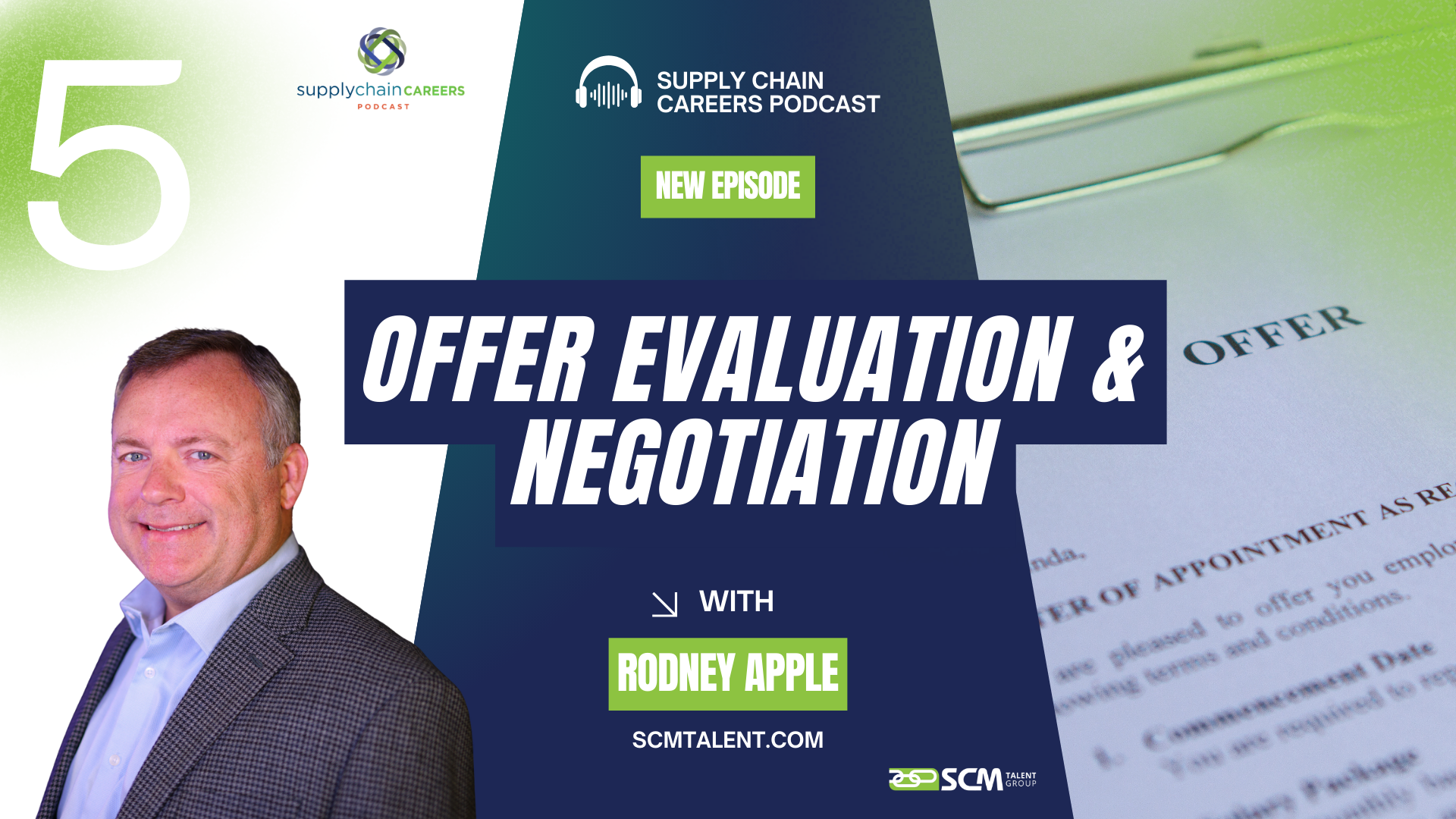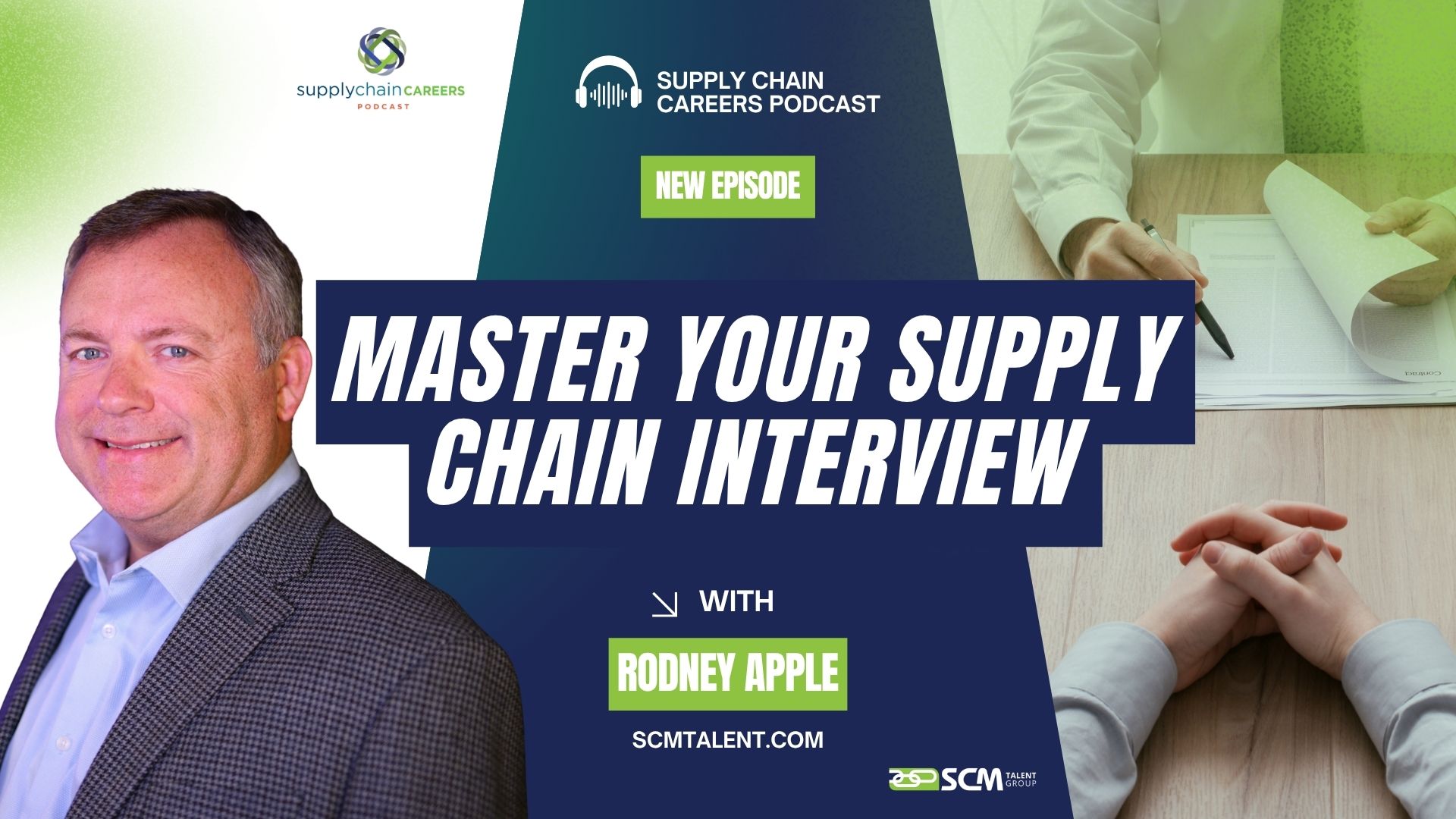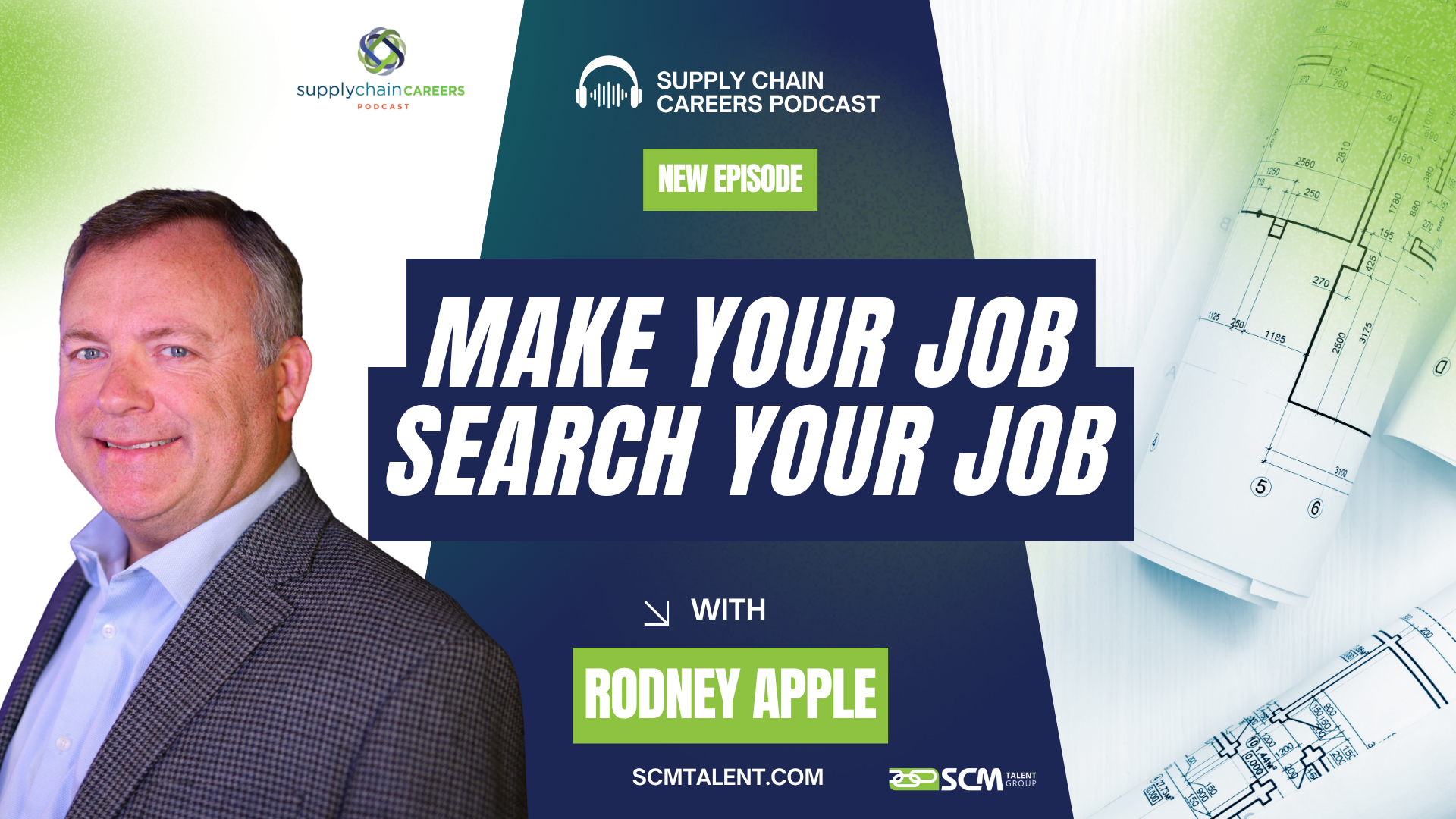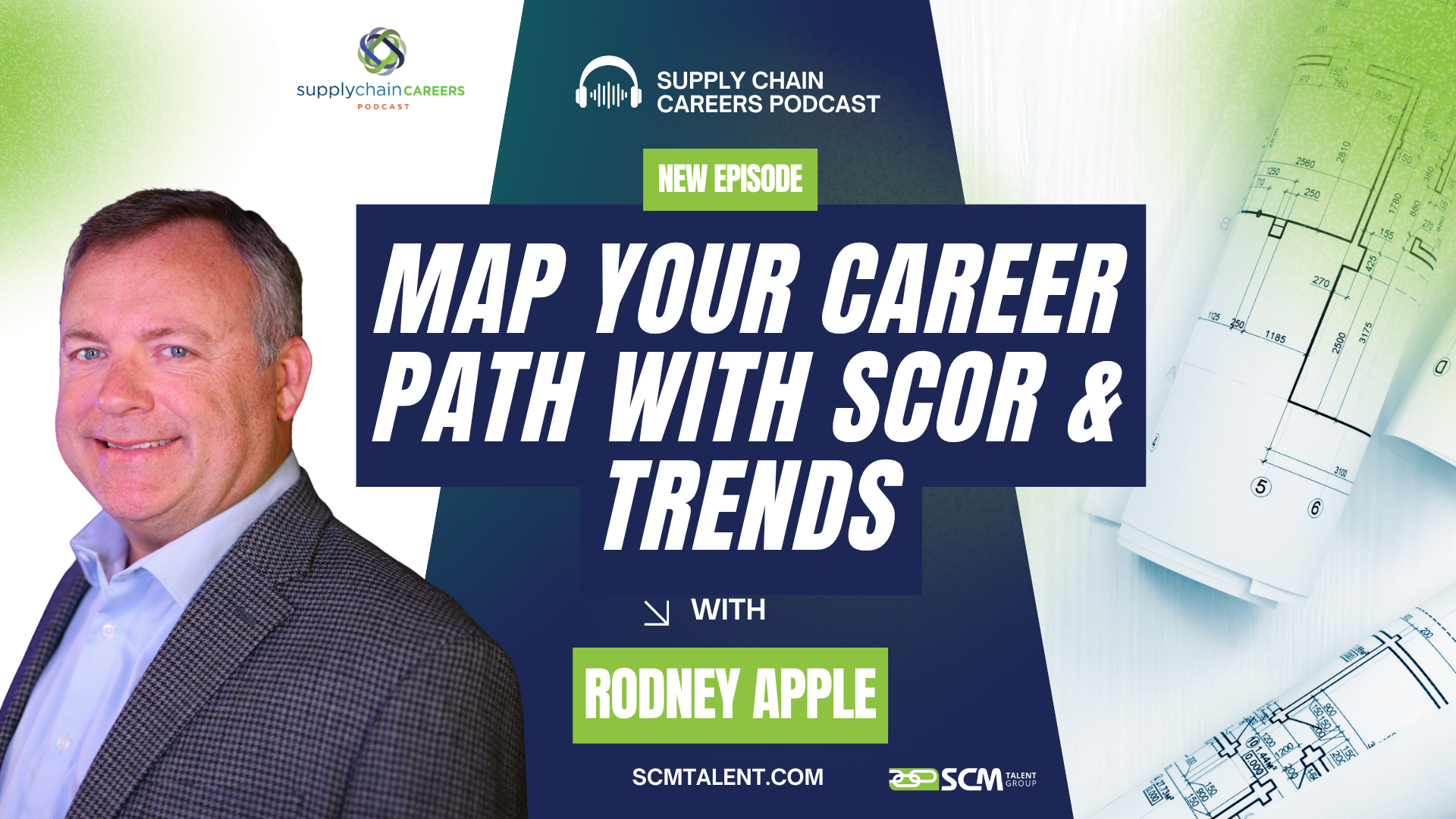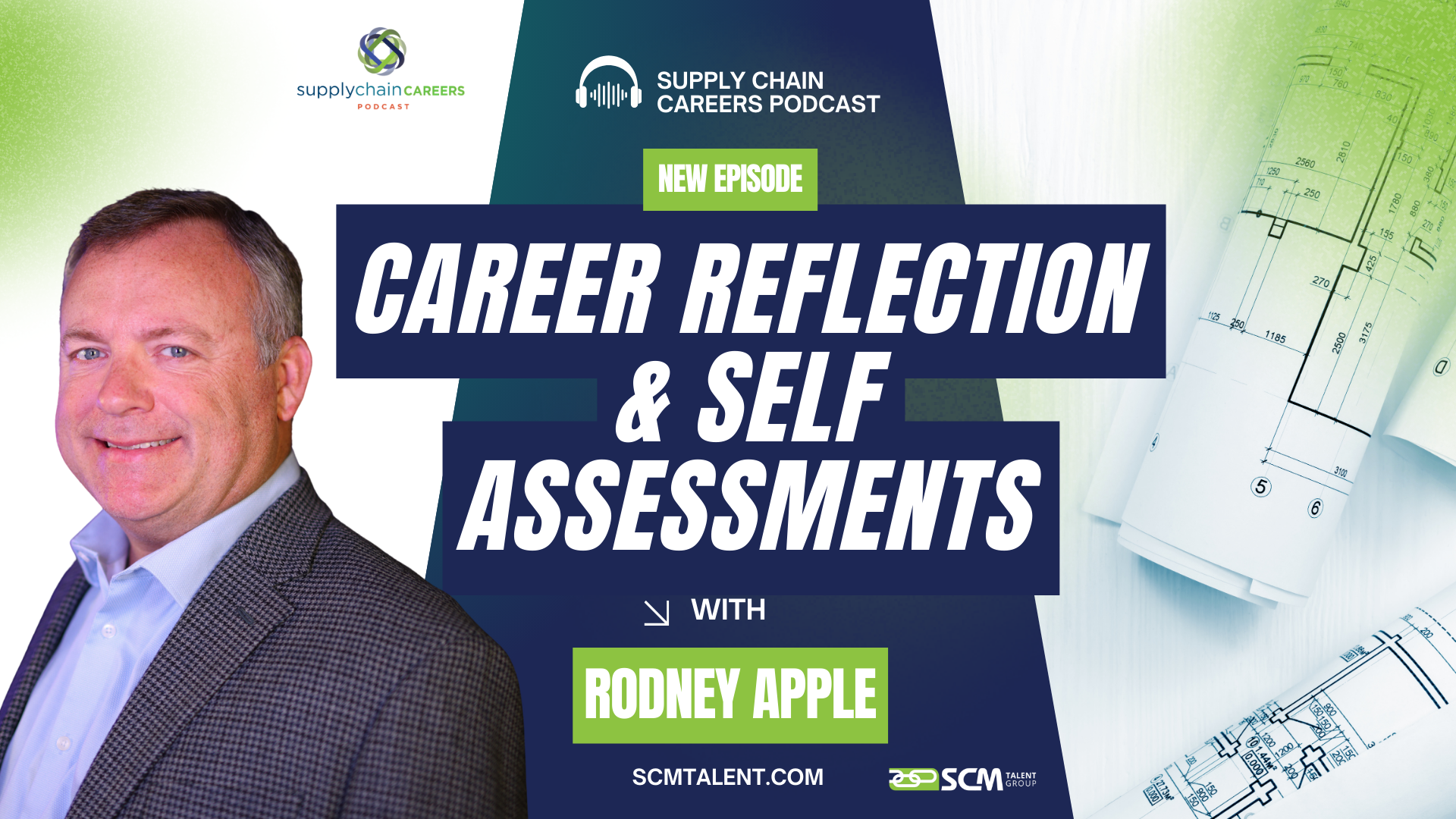[00:00:00] Mike Ogle: Welcome to the Supply Chain Careers Podcast, the only podcast for job seekers, professionals, and students focused on career-enhancing conversations and insights across all aspects of the supply chain discipline. This podcast is made possible by SCM Talent Group, the industry-leading supply chain executive search firm. Visit SCM Talent Group at scmtalent.com. In this episode of the Supply Chain Careers Podcast series titled “Supply Chain Talent Building and Engagement,” we speak with Andrew Lobo, an organizational design consultant with cross-functional and cross-industry experience as a Global Chief Human Resources Officer. Andrew has worked at companies such as Coca-Cola, Our House, and C2 Education. Join us as Andrew talks about adopting a mindset that uses supply chain techniques for managing supply chain talent, ensuring you have an uninterrupted supply pipeline of people to keep your organization running. Listen to Andrew’s advice on adopting supply chain concepts like strategic sourcing, supplier diversity, supplier risk management, make-versus-buy decisions, and safety stock. He also explains where the analogy doesn’t apply as well, particularly the major differences between the flow of people and the flow of goods. Andrew closes with his thoughts on traditional performance reviews and the development of talent. I’m your podcast co-host, Rodney Appel.
[00:01:36] Chris Gaffney: And I’m your podcast co-host, Chris Gaffney.
[00:01:41] Rodney Apple: Welcome to the Supply Chain Careers Podcast. I’m Rodney Apple, your co-host, along with Chris Gaffney, your other co-host, and we’re excited to bring you another episode within our Supply Chain Talent Building and Engagement series. Our guest today is Andrew Lobo. We’re going to be discussing a very fascinating topic. It has to do with why you should manage your workforce like a supply chain. There are quite a few parallels between the two. So, Andrew, welcome to the show, and thanks for joining us today. “Thanks very much for having me. I’m really looking forward to this.” Excellent. So, Andrew, before we get started on the meat of this topic, could you give our audience a quick overview? Obviously, you, me, and Chris worked for a while at the Coca-Cola Company in various roles, but give us a high-level overview of your background and maybe highlight some of the experience you’ve had from the HR talent perspective and supporting supply chain.
[00:02:39] Andrew Lobo: Sure, I started off my career actually in accounting and went to grad school, went into strategy consulting, which is when I first started getting involved with supply chains. A huge medical device manufacturer was my sort of real key introduction to supply chain management. And after strategy consulting, I moved into HR via an internal consulting role at Coca-Cola Company. And really since then, I’ve been focused on HR, whether at Coca-Cola, most recently in CHRO roles at PE-backed companies. I left my most recent role in 2022 and have basically been doing consulting on my own since then, mostly as an HR consultant.
[00:03:28] Rodney Apple: Yeah. And could you maybe just touch on that experience? I know there was a role you had at Coke or a couple of roles where you supported the supply chain function just to bridge those two together at the intersection of supply chain and talent, which is where we…
[00:03:43] Andrew Lobo: Yes, so specifically linked to supply chain. I did consulting work, as I mentioned, with medical devices. I co-founded an internet startup that was focused on the beverage alcohol supply chain globally. I’ve done chemical manufacturing supply chain work and oil and gas supply chain work as a strategy consultant as well. And then at Coca-Cola, in two areas, I supported bottlers, which are an integral part of the Coca-Cola supply chain, as well as I was the director of talent management for Coca-Cola’s technical organization, which included procurement, quality science, as well as lots of the manufacturing capabilities at Coca-Cola Company. So all of these supply chain experiences throughout my career, coupled with the actual HR functional work that I was doing, led me quite a while ago, probably back in 2000, to realize there was a strong potential parallel between supply chain management and…
[00:04:55] Chris Gaffney: Andrew, you and I crossed paths in those days, and I would always say, hopefully, the supply chain folks were influenced by the HRDs who were our business partners. And that was important for us. We wanted them to be business partners, but obviously, we’ve rubbed off on you. So, I’d love for you to talk about how you got this revelation or epiphany that says there are just a lot of parallels. And how firms thinking about that might be advantaged in how they are thinking about talent and workforce.
[00:05:25] Andrew Lobo: Yeah, how it started was, and the way I start off most of my work, is by asking how firms make money. There are basically two ways. One is by taking some form of material and transforming it into something else to sell. This is called the manufacturing sector of the economy. The other method involves people who produce services to make money. The services sector makes up about 75 to 85 percent of the economy, yet the management of the supply of those people (talent) lacks the rigor and precision historically seen in the manufacturing sector. Given we’re talking about managing the supply of talent or people, why not get inspired by or align with some of those established processes and systems that exist in the manufactured goods sector?
[00:07:14] Rodney Apple: Andrew, I’ve always thought, like, when it comes to recruiting, which is where I focus in supply chain, obviously, the sourcing and procurement part, I’ve always seen the parallels there. We’re sourcing for talent, looking through different channels, negotiating, etc. But I would love to hear your perspectives on the parallels that can be drawn between procurement as well as supply chain when you think about recruitment strategies and talent management and so forth.
[00:07:42] Andrew Lobo: Yeah, so first of all, before you start talking about procurement and sourcing talent acquisition, you’ve got to know exactly what you want to recruit and source and procure, what, when, where, etc. Once that’s done, the key connection between supply chain and talent is in the goal, right? What is the goal of sourcing and procurement? In either case, it’s about making sure you have an uninterrupted supply of the thing or the people that make you money. There’s an absolute identical goal in both cases. And again, what therefore are ways in which the practices in one can help practices in the other. And a great example of that is in sourcing. It’s where do we look, right? And a good example of that in the supply chain area is in the extraction business, right? Oil and gas, mining, that kind of thing. Because their first step is where on this planet can we find the thing we’re looking for? And so as you talk about procurement of talent and talent acquisition, where are those pools of talent around the globe that are what we want and where this starts to get interesting is there’s a finance term called efficient markets produce normal returns, inefficient markets produce abnormal returns, which means if you’re looking for talent in the same place, everyone else is, you’re going to get normal return, but if you can look outside of those normal places to find that talent, then you can get abnormal returns, whether it’s lower cost, whether it’s higher skills, whatever. And a quick example of that in the talent space is the focus on industry. We want someone who’s got industry experience here. Let’s take HR, let’s take finance. Let’s take a functional area. What’s easier finding someone in a different industry that knows finance or HR backwards and forwards, and has X amount of experience and then teaching them the key parts of your industry or having someone that knows your industry that may not be as fully developed in one of those functions. So I think that again, there’s a very key similarity there in terms of how you do look sourcing for talent.
[00:10:26] Chris Gaffney: So when you thought about that, that higher-level market view, then you’ve got to start having lines into those talent pools and obviously have relationships and obviously from a classic procurement standpoint, you’ve got SRM where you’ve got either existing suppliers or potential suppliers. How do you think about that? You know, supply relationship management model as it connects to staying in contact and cultivating pools of talent, potential recruits, pipelining that.
[00:10:56] Andrew Lobo: Yeah, so I always like to break things up in this case, so they’re more manageable and it helps with focus. In this case, I think the first thing you got to think about is the criticality and availability, both things. Of that thing or person that you’re looking for right in the manufacturing industry, there are things like called strategic suppliers, right? And they’re those suppliers that are supplying the thing. That’s really critical to you as well as maybe difficult to obtain otherwise. And so those are the relationships that you really want to make sure are strong. If you’re buying office supplies, whatever. Yeah. So it’s important in terms of the supplier relationship. So again, same thing, talent starts off with what are the roles that are most critical and hardest to source. And for those roles, those are the ones where you really need to take, and again, um, a hard look at the supplier relationships. Now, when you think about supplying supplier relationships for the most critical roles and the least available roles. The best supplier is the company itself. Okay, so thatproduces intense focus on talent management, talent development, learning and development, succession planning, those kinds of things. Because for those roles, by definition, they’re critical and hard to source, the best place to find them ideally is internally. Now, if it’s a skill set that you don’t have, it’s a new initiative, it’s a new business, then obviously you’ve got to look externally and finding that source of supply is critical. That could be frankly, without getting into any kind of legal stuff, that could be another company, that could be a specific university, that could be a location in the world that has, happens to have a source of talent. So being able to find those pools for those critical, but unavailable or hard-to-find talent is very important.
[00:13:11] Rodney Apple: Yeah, to answer it, I think in the supply chain world, we could even refer to that as do we make it or buy it, like doing that analysis, any thoughts there, any further thoughts on that analogy?
[00:13:21] Andrew Lobo: Yeah, I think, I think again, the more critical and less available a role, the more you should consider making it because first of all, you have more control. You have control over the talent that you have, they’re right there. You have control over what learning and development is doing. You have control over your succession planning processes, that kind of thing. So it actually reduces the risk of actually being able to find that talent. The second thing isn’t so much from the skill set, but it’s also just seniority. Rule of thumb, and that’s all this is, the more senior the role, the more you should consider, I think, making that talent versus hiring him from the outside and then lower roles. You can think about buying that talent, looking elsewhere. And the reason that becomes important is context matters and it matters all the way up and down. So to the extent that you can make or build internally, those senior positions, I think the better.
[00:14:58] Chris Gaffney: We’ll keep digging into some supply chain terms and think about how they work with talent. You’ve seen a lot during the pandemic, people had challenges with frontline employees and in all honesty. We, we also see with the race to AI, this whole idea of how do I bring talent quickly into my organization, whether it be full time or whether it be partners to help augment those types of things. Well, there’s a lot of JIT thinking, and some of that got kicked around during the pandemic. What’s your thoughts around, uh, just in time mindset in terms of how that does or doesn’t work effectively when thinking about talent management.
[00:15:37] Andrew Lobo: Yeah, that’s a really interesting one. We talked earlier about some fundamental similarities between supply chain management and talent management. There’s one, of course, fundamental difference. And that is that all of the goods, all of the things that you’re buying in traditional supply chain management aren’t likely to get annoyed. They’re not likely to leave. They’re not likely to walk away. Whereas people do that stuff. The level of precision you can get from a JIT perspective, with goods, with things, I don’t think will ever be matched in terms of talent. Doesn’t mean though you shouldn’t try and think about it. And yes, you mentioned having good strategic workforce planning, having good succession planning, having good development systems in place are the things that you really should be focusing on to get as close to JIT as possible. Understanding where you can actually take part, sorry, leverage contractors, the gig economy, employees of record globally, where they’re managing your workforce and they have ready access to that talent. All of those things should absolutely be part of your overall JIT philosophy as it comes to talent. And again, the key term here, I think as it relates to supply chain is lead times, right? When you have a need, how quickly, how short is that lead time and all those things I just mentioned, different ways to keep that lead time as short as possible. And again, and I’ll probably say this another three or four times in terms of focus and priority. Doing that for these most critical, least available roles is the starting point.
[00:17:45] Rodney Apple: It ties right back into your sourcing and procurement with establishing in a proactive manner your supply base, right? That could be search firms, staffing firms in those locations, like you mentioned, where you need to rapidly deploy. Resources or someone importantly, so you can quickly, you know, backfill that role if you don’t have anyone internal. So I think the very best companies have those things in place.
[00:18:11] Andrew Lobo: Right. And as, as you well know, Rodney, given that you did it so well for Cokeit, doesn’t necessarily have to be those suppliers, right? You can make that capability internally. And have your own sourcing group to find that talent and there are obviously some benefits there, whether it’s cost, but more importantly, understanding that culture and context. So it’s happening intrinsically throughout the entire search process. So again, but that’s again, just one arrow in the quiver. Yep, exactly.
[00:18:44] Chris Gaffney: So a lot of this gets into then the classic elements of supply chain planning. And I recall my procurement friends and my days when I was in transportation and we were about procuring capacity, it was fundamentally based on what’s our demand going to be over this time frame. And I think obviously that plays into and we used sales and operations planning kind of routines to get alignment across functions, the demand creation side who needed the resources. Who was going to go get the resources and then what’s the math around that? The finance people staying in the middle of that. So how do you think about those classic, you know, demand planning, supply planning, demand, supply, balancing things and how it plays into talent.
[00:19:28] Andrew Lobo: Yeah. First of all, it’s funny. You, you talk about supply and operations planning. The phrase, the same thing is supply inventory and operations planning. But the reason I like that is, is very, um, immature. It’s just a SciOp sounds cool. It’s a futuristic, but look, the principles, I think absolutely apply. I think there’s two pieces to SciOp or supply and operations planning that directly apply and make sense from a talent perspective. The first is, as you just mentioned, which is integrates. Other functions, right? So just a supply chain operations planning integrates production, integrates sales, integrates finance. So your talent management process, uh, should integrate your learning and development team, your talent acquisition team, your strategic planning team to understand what is needed and then what are the best ways to actually Get that stuff where you need it when. So it’s very similar again in that way. The second distinctive feature of SciOp I think is it’s constantly being adjusted, right? As customer demand changes, as supply demand might change, depending on the specific thing. But so. You’re constantly looking at that forecast and moving it and changing and altering the supply chain as needed. Same thing with talent. The one thing that always affects the talent plan is going to be turnover. So making sure you’re on top of that. Also, to the extent that strategies and initiatives are changing, or there’s new obstacles coming in, Again, you need to use that to adjust your talent planning. If you go out and think you’re going to source people, but everyone’s sourcing that, you may need to adjust and move to learning and development changes. So those are the two areas. I think that integrating that functional integration piece and that constant changing piece where SciOp is very similar between supply chain and. Talent management, by the way, I do want to just reinforce here, we’re saying talent management because we’re comparing it to supply chain management. So, it’s a slightly broader term than talent management as a sub function within HR.
[00:22:06] Rodney Apple: Absolutely. And Andrew, you just brought back a memory from our Coke days. I think we were there and talent acquisition at the same time where they put the workforce planning responsibilities on us. So I had to come up to speed very quickly on workforce planning and it started with looking at. Historical data think about point of sale data is an example where we looked through all of the turnover across all the job functions and families and plant locations as an example. What are those roles that typically turnover where we should be thinking about establishing? Pipelines, whether it be within our recruitment system or networks, or whether it be universities and things like that, that leads into university recruitment. We also had to go talk to business leaders and figure out, hey, what’s our big strategies for this year or to the extent they could tell us. Are we acquiring companies and things like that may. Make big impacts on hiring and then we had to look at succession planning and talk to your talent development folks and who’s in that pecking order who’s in line where might we have a gap and that kind of created that forecast for supply chain. We did it for North America and global sitting down with the HR business partners and that basically developed our kind of our supply plan for how are we going to resource these needs now that we know we have a baseline of what we’re going to need. From an acquisition perspective, thanks for jogging that memory. Cause that was a really neat experience. And I think it ties right into what we’re talking about.
[00:23:39] Andrew Lobo: Yeah. The intelligence of planning 1997. I was asked to actually startthe human capital planning capability at Coca-Cola Company. Since then, that term has evolved into strategic workforce planning. But fundamentally, yes, it starts with where the business is going, what impact that has on roles, and then how do we fulfill those roles, whether it’s internally versus externally versus short-term contracting. And while I’m talking about this, there’s a fourth dimension here, which is critical, that I actually still don’t see too much, but it’s absolutely critical. And that was a term I called at the time, talent activation. And the reason I did that is because at Coca-Cola, it was very important to activate brands. Right? You don’t just get Coke on the shelf. You’ve got to then activate that package with promotions and all sorts of other things. The same thing with your people. Just having the person in the role, which obviously planned for is one thing, but activating that person so they can do the best possible job, whether that’s their direct manager, whether it’s overall leadership, whether it’s tools, whether it’s location, all those other pieces need to be part of that overall plan, just like in supply chain. Yes, you talked about those goods, but how are you actually making sure that those goods are properly used? Whether let’s just take the supermarket industry, right? Certain of their products need to be refrigerated. Are you getting refrigeration done in a plant? Is the maintenance being done properly? Have you organized the shifts properly? There’s all these things around the actual fall, which are critical to getting the full benefit of everything you’re planning for.
[00:25:37] Chris Gaffney: Yeah, my hot button right now, Andrew, is effective onboarding. You’re sure not activating an employee, whether they’re an existing employee moving within the organization or new. If you don’t onboard them and get them integrated quickly, you don’t have much of a chance on that activation, you get that first impression.
[00:25:55] Andrew Lobo: That’s the first time you would activate someone. And then, but beyond that, there’s also again, if you’re moving people internally, what does onboarding look like? For them in that new role. Absolutely.
[00:26:14] Mike Ogle: During this short break, we recognize that this podcast is made possible by SCM Talent Group, the industry-leading supply chain executive search firm. Visit SCM Talent Group at scmtalent.com.
[00:26:29] Chris Gaffney: Another hot topic over the last couple of years has been supply chain risk management. And people say now resiliency and that type of thing. But clearly, risk management plays in the space of talent. And I’m curious what parallels you draw as you think about that.
[00:26:45] Andrew Lobo: Yeah. So, there are huge. The fundamental risk in supply chain management and talent management, it’s exactly the same. It’s out of stock, right? That’s the number one, right? And that’s any place in the supply chain. That’s not just on the supermarket shelf, which is where most people think about. No, if you’ve got out stocks in any place in the supply chain, you’re in trouble. Obviously there are other risks like quality. There are risks like performance. Does the, whatever you’re buying actually do the thing it’s meant to do? So there are risks all the way through it. The key here, though, in both cases, as we’ve discussed, is again, back to what’s that criticality of that role. So I’ll take an example in consumer products companies, and it is both criticality and availability. In consumer products companies, a traditional classic brand manager role is a critical role, but it’s also fairly highly available. Lots of those classic brand management companies out there, in the case of Coca-Cola, a lot of people were interested in at least hearing about opportunities with Coca-Cola. So the availability wasn’t crazy. Now, today, having someone that combines equally classic brand management with digital marketing. And knows both of those inside and out arguably extraordinarily critical and be probably quite difficult to find. So anyway, so reducing our stocks is key. And then so then the question is, how do you then mitigate those risks? And again, with supply chain management, you’re talking about good supplier relationships for those critical ones. You’re talking about reducing lead times. So that if you are out of stock, you can at least replenish quickly. And you’re talking, and this is where it gets interesting. Very interesting. When it comes to talent, you’re talking about safety stock. And so for those critical roles that are hard to find, if you find one, does it make sense to do safety stock? I’m not suggesting you hire two people to do the same job. I’m suggesting that concept. Of safety stock also, I believe,has a role within talent management.
[00:29:14] Rodney Apple: Yeah, Andrew, I think that’s a great point. And you also have to think about the other side of that coin, which is your O and E, right? Over time, as things transform, and we’re getting ready to get into this on the technology side, obsolescence, you might have some obsolete inventory or talent as well as excess. And so excess is usually companies go up. Sometimes their business goes down and then they ebb and flow the workforce accordingly. And it goes back to that Holy Grail of managing that demand with the supply, right? Any thoughts on that perspective as it relates to obsolescence and excess in talent?
[00:29:51] Andrew Lobo: Yeah. So the two pieces there are capacity and capability and the skills themselves becoming less useful or relevant versus do we simply have too many of them because we either overhired or something’s happened to improve productivity. So we don’t actually need the same amount and yes, and again, I, anyone who is getting a paycheck, one assumes is important because otherwise, why are they employed? And I think part of that capacity thing can be driven by on the talent side. By what’s the best way to put this, let’s just say not thinking hard enough when you are getting new talent, something’s growing, just like hire. And then when the first problem occurs, oops, too many people cut. If more thought is placed for the hiring, proper strategic workforce planning. The other thing included when I did human capital planning was making sure that before you had any people either building or buy. You make sure that you actually need a person to produce the outcome that you’re looking for. In other words, could the outcome be achieved by changing a process, adding technology, something like that. So that you’re not just blindly or bluntly just hiring a person to do something. You’ve really thought through it and said, do we actually need this person? By getting the demand accurate at the beginning, it can reduce those fluctuations, whether it’s capacity or skills later on. But of course, when that does happen, yeah, you’re going to need to make changes just as you would on the supply chain side.
[00:31:46] Chris Gaffney: I’m definitely passionate about that last point, right? The best leaders manage that talent such that they always stay within the guardrails and don’t have to make those harder decisions that in most cases are challenging both for the company and the employees. Absolutely. But you mentioned technology, and technology has been a factor in supply chains, frankly, over my entire experience. And it’s a bigger factor now, obviously, on the people workforce talent side. The same is true. And so I’m curious in your view, how that’s evolved and, and become more relevant to how people need to think about this space.
[00:32:27] Andrew Lobo: Yes, in supply chain, I would argue just like we were talking about with the JIT, technology has a more precise in terms of its impact on an outcome, precise benefit, or, or impact. So you can look at some of the things that have happened with supply chain, right? So barcodes, RFID, MRP systems, robotics, and automation. All of those things have this very precise and predictable impact on the actual, what are the main things that you’re looking for out of quality or to improve the quality, cost, and speed of, of, of what it is that you’re actually doing. And each of those things has a very distinct visible impact on the quality cost and speed of the things you’re actually producing with talent, I don’t think that the technology has in my, this is my opinion has had the same kind of precise impact it’s helped with speed, things like it’s helped with some insights in terms of currently with analytics. Um, the ERP systems like Workday or SuccessFactors or stuff like that sort of help with getting some data collected. But in terms of having an equivalent kind of impact, I don’t think HR or technology has had as big of an impact on HR. And part of the reason for that, again, is because it’s just harder when you’re talking about people, they’re not as predictable. People are predictable. That’s one of the things that make it so valuable and useful. But it also means that you can’t expect the same kind of implications or impacts as you could for goods and manufactured areas.
[00:34:23] Rodney Apple: And I think this leads into we’re talking about the Advent of technology and how it’s shaped supply chains, maybe not as much on the HR side because of the variability, uh, that you have with people and talent in the workforce. But what are you see Andrew when we again talking about parallels because we talk a lot about with emerging trends, what’s thefuture of supply chain and what’s the future of talent management or where should talent management go in terms of leveraging technology? Do you foresee these trends maybe converging in the future?
[00:34:59] Andrew Lobo: I don’t know that it’ll converge precisely on the supply chain side. I just think that if you can somehow integrate IoT, AI, and automation/robotics, it’ll be astonishing on the supply chain side. But with people, I really think it isn’t the technology itself; it’s what we do with the technology. It is about analytics, not because it’s a fancy buzzword, but just getting a true, better understanding. And here’s where, frankly, I’ll make a segue to the analogy with marketing. It’s being able to segment your employees like marketing segments customers, and then by their needs, by their rates, by their performance levels, by all these different areas and figuring out how we can make them most productive, which includes supporting employees fully so that they can, in fact, do a wonderful, great job and be happy about it. So I just don’t think there’s a killer app for people that I’ve seen anyway. And I think that is one of the differences in the application of technology versus sort of physical goods side versus the talent side.
[00:36:40] Chris Gaffney: You’re preaching to the choir with Rodney and I on this topic, but as we talk to the audience and we’re making the case for this parallel and leveraging this parallel, as you get to really the compelling elements of that, or are there a couple of best practices or role modeling or cases where you’ve seen this just be a compelling value story for people who’ve used this mindset shift?
[00:37:04] Andrew Lobo: Yeah. Where it all started, I was doing some consulting for an oil and gas company, and they were very used to finding new sources of, in this case, natural gas. And each of their exploration efforts was called creating a resource play. There were resource plays in the Colorado mountains, in Canada, and all over the world. So we literally said, let’s do a resource play in talent. And just using that term “resource play” in talent literally made all this fall into place for them. And so they said, “Oh, my God. Yeah. Where do we find talent? How do we take it out of the ground? How do we move it and add value to this talent?” I didn’t have to say anything. It became so simple for them to understand what we were talking about. And so that’s how they started migrating in terms of they made their own connections. And then recently, just as an example of one of the things we talked about, in my most recent company, which was C2 education, we had an issue where we were hiring externally some of them are most important roles instead of internal. And literally we had a 10 percent internal fill rate and we moved that to 80 percent internal fill rate within a year, and the necessary precondition to that was overhauling dramatically our onboarding for that role to your earlier point, Chris. So we had a 12-week onboarding process for any external hire. We changed that to a six-week onboarding process, so half the time, but it actually that six-week onboarding process produced better results in terms of ability to hit sales targets after the onboarding was over, and we would put all of those internal hires that didn’t have that skill set through that onboarding process, and it brought them up to speed tremendously well, better because they knew the inside nature of the company and the role. And to this day, that’s the most difficult role I’ve had to fill by the way, because it’s not a classic sales position. It combined both sales and execution of learning activities for our customers. And those two sensibilities are quite distinct. So anyway, so it just improved their ability with the shorter onboarding and great. And by the way, you’ve heard this several people are thinking about. Okay. Those are examples of some times I’ve seen this. If anyone’s thinking about going down this route and using some of these supply chain practices, the place to start, I think, and you’ve heard it scattered throughout this conversation, is looking at those roles and figuring out the most critical roles and the most difficult to source roles, because those are the roles that you really should start paying attention to, whether it’s on the strategic supplier side, whether it’s on the strategic workforce planning side, whether it’s on a succession planning side, those are the roles where you’ll get your biggest bang for your buck.
[00:40:27] Rodney Apple: It’s tough, Andrew. This has been a fascinating topic and I’m glad we went through it today. I’d like to end it because we know that HR, it’s purely, it’s a people business, right?
Yes, we have analytics, tools, technology, same thing on the supply chain side. It’s a people side when it comes to, at the end of the day, we’re trying to create value, right?
So how are we measuring that? If you think about the parallels there, I think about. Uh, supplier scorecards or balanced scorecards, right? In parallel with that performance reviews, what are your thoughts on that piece? Because it’s such a, it is a hot topic these days, the annual reviews, dog and pony show, or do you do real time coaching and, uh, critiquing along the way?
[00:41:09] Andrew Lobo: Yeah. Don’t get me started on traditional performance reviews. A complete and utter time suck, morale crusher and all of it. Ultimately for the difference for one or 2 percent in pay. So silly. So yes, of course the answer is ongoing and daily coaching, but it’s also, it’s something that is fascinating to me.
L& D is doing this stuff all of a sudden creates much. More visibility and importance to L& D. It’s not just that we’re training our people. Yes, we’ve done X number of training courses. It hasn’t had an impact. Patrick’s model for training effectiveness has been around for 50 years. And it says, did the training itself.
Was it good? Did they like it? Then step two, did they retain it? Step three, did they apply it? And step four, did it add value? The vast majority of learning and development measurement stops after, did we like the trade? Otherwise, it’s just how much. In this case, if you are going to actually start getting serious about saying, here are our most critical roles, here are our biggest leadership gaps, we need to fill these and focus on.
getting the skill sets internally, then we need to really start measuring the actual impact of the development that we’re actually doing and or the training that we’re actually doing. So that’s the piece I think where the measurement can make huge strides that it hasn’t. Otherwise, as far as performance goes, the other thing that’s interesting on performance reviews, this is actually a different topic, so you might edit this out, is for white collar work, there’s not much tangible.
There’s projects and there’s a million reasons people don’t get projects done. So it ends up being a waste of time beyond all the other reasons it’s a waste of time. So if you’ve got a hard metric that you can hold someone to, by all means go for it. But if you don’t, then again, it’s contributing to nothing.
[00:43:24] Chris Gaffney: Good stuff. Good stuff. All right. This has been great. Andrew.
[00:43:30] Rodney Apple: Yeah, this is you can talk about this all day long. Totally. Andrew. This has been an extremely fascinating topic. Paralleling the practices and disciplines of supply chain management that we live and breathe every day to talent management. Um, H.
R. we appreciate your insights and perspectives today. Before we wrap though, I know you’re focusing on HR and talent consulting. If folks are interested in your services, how can they find you?
[00:43:59] Andrew Lobo: The simplest way, just send me an email or LinkedIn, Andrew Lobo on LinkedIn. And my email is amlobo, L O B O at gmail.
com.
[00:44:09] Rodney Apple: Fantastic. Thanks again for your time today, Andrew. We appreciate your insights and perspectives. Thanks so much. It was great. Awesome.
[00:44:20] Mike Ogle: Thanks for listening to this episode of the Supply Chain Careers Podcast. Be sure to listen to other episodes and sign up to be notified when future episodes are released as we continue to interview industry leading supply chain experts. This podcast is made possible by SCM Talent Group, the industry leading supply chain executive search firm.
Visit SCM talent [email protected].
